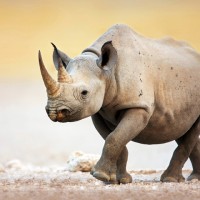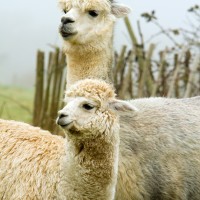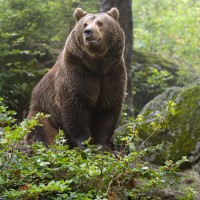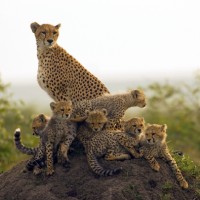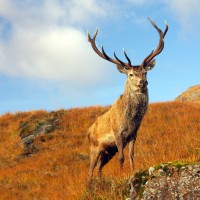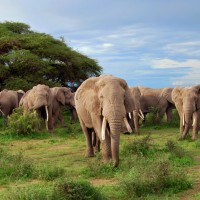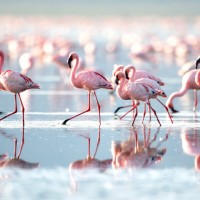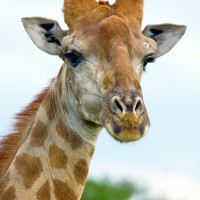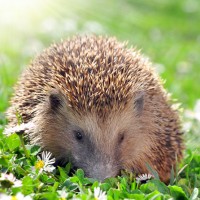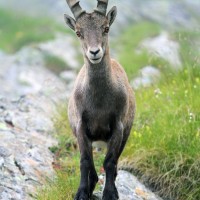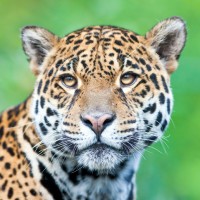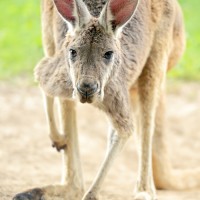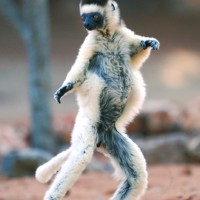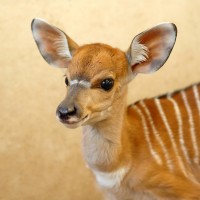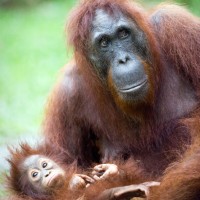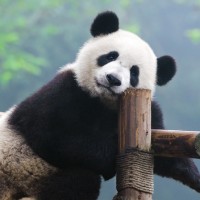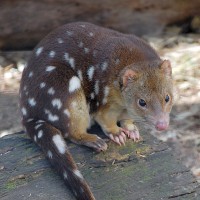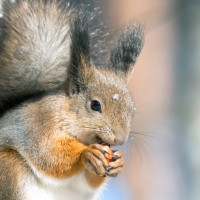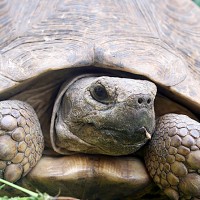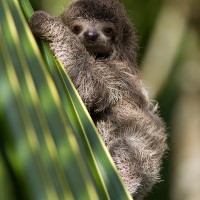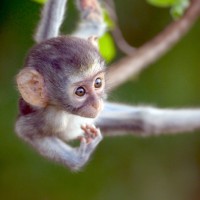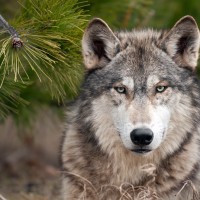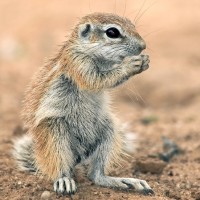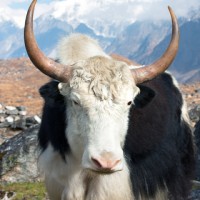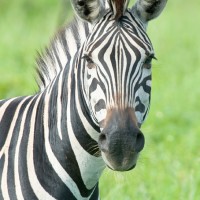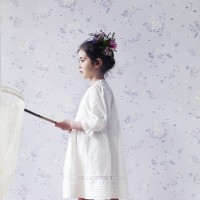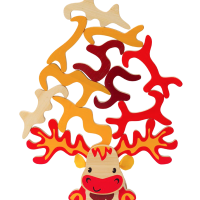Of the five species of rhinoceros, two wander the grassy plains of Africa. There is actually no colour difference between the black and white rhinos species – both are grey. The ‘white’ component of the name may have resulted from a mistranslation of the Afrikaans word weit meaning ‘wide’, referring to the square-lipped shape of their mouths. The name ‘black rhinoceros’ was chosen to distinguish this species from the white rhinoceros (pictured). African rhinos have two horns, which grow up to 8 centimetres (3 inches) a year and have been know to grow up to 1.5 metres (5 feet). Their horns are made of a substance called keratin (the key component of hair and fingernails), that grows back if broken off. Females use their horns to protect their young from lions, crocodiles and hyenas; males use them to fight for territory or mates. An adult rhino with its horn and thick skin is safe from all predators excepts human poachers, who hunt them for their horns. It is estimated that now only 20,000 white rhino and 5,000 black rhino remain in the wild.
Crib Notes:
- Black rhino are most active during the night-time when most of their foraging and drinking is done.
- The white rhino was once on the brink of extinction with only around 50 individuals left in the wild.
- Rhino means nose and ceros means horn in Greek.
Time of year: March to May is the perfect season; the winds drop, it’s beautifully mild and the tourists have gone.
Destination: Kwandwe Private Game Reserve is located in South Africa’s Eastern Cape in 54,000 acres of private wilderness, a place the ‘big five’ – including both the black and white rhino – as well as thousands of other animals call home. With a choice between four luxury safari lodges (three of which welcome under-12 year olds), the reserve offers numerous day and night safaris as well as a range of activities tailor-made for children – including fishing trips, treasure hunts and a personal ‘Rangers in Training’ pack each. Children can also embark on the daily ‘Horns and Stripes’ game drive to view zebra, giraffe, monkeys and more, with or without mum and dad. This malaria-free reserve has won multiple awards every year from 2002-2008, and is ideal for both the experienced explorer and a child’s first taste of African wildlife.
Price Guide: From R3,465 to R6,935, depending on the season.

